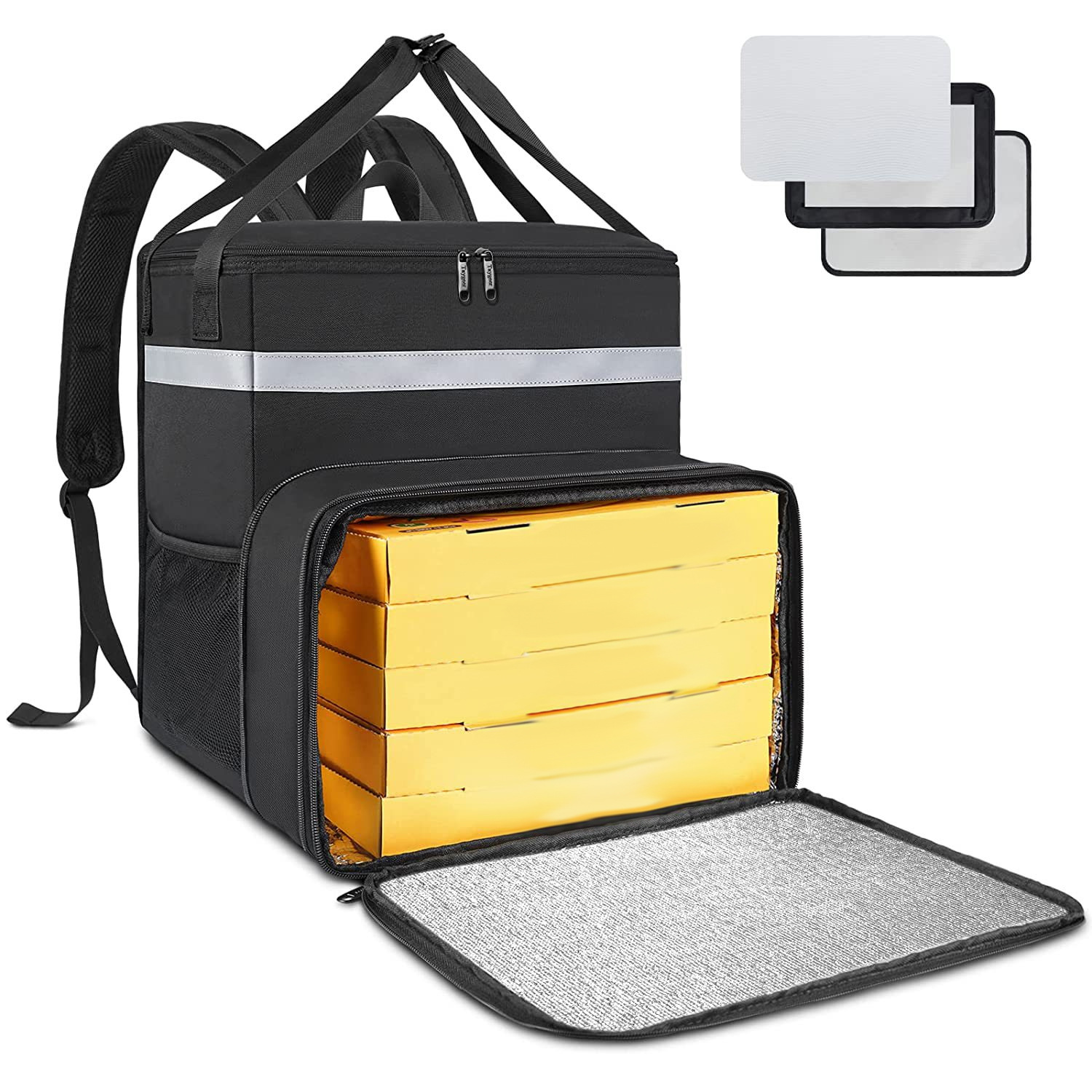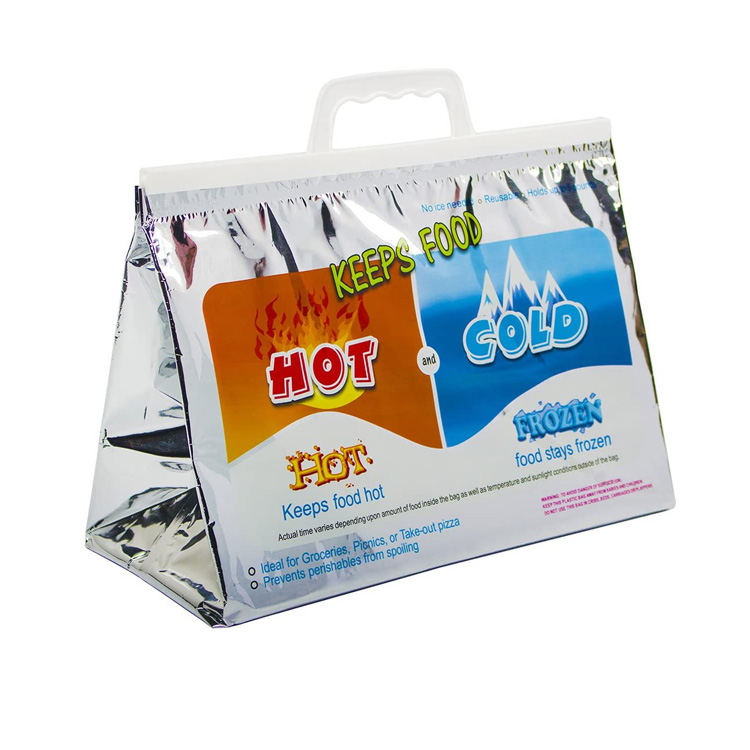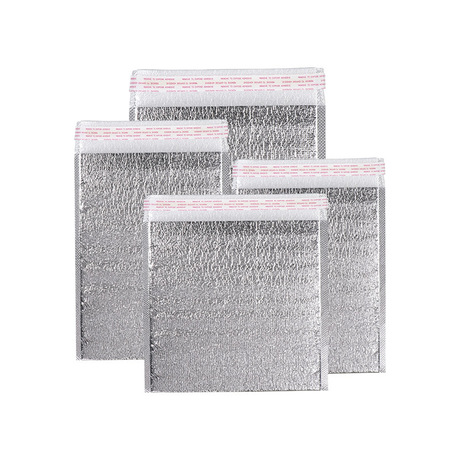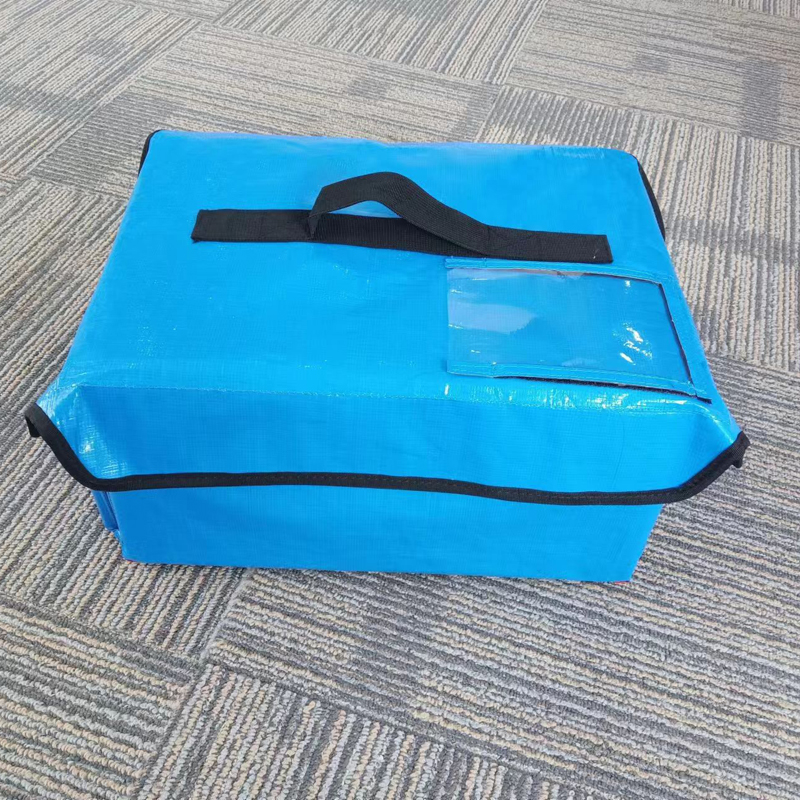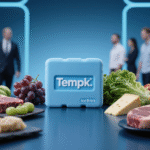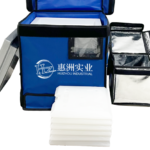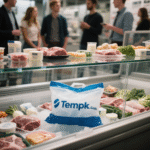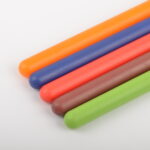1. Precautions for transporting cooked food
1. control de temperatura
Cooked food must be kept in the appropriate temperature range during transportation to prevent bacterial growth and food deterioration. Hot food should be kept above 60°C, and cold food should be kept below 4°C.
2. Packaging safety
Ensure that the packaging provides adequate protection against physical damage and contamination of food during transportation.
3. Time management
Minimize the transportation time and ensure that the food arrives at the destination in the best condition.
4. Labeling and identification
Clearly mark the packaging, indicate “perishable items”, “refrigerated / insulated” and “fragile items”, and remind the logistics personnel to handle them carefully.
2. Packaging steps
1. Prepare the materials
-Efficient incubator (como EPS, PPE, or VIP)
-Condensant medium (mi. g. bolsa de hielo en gel, phase change material or water injection ice bag) or heat medium (mi. g. thermal insulation stone, hot water bag)
-Leakproof packaging container
-Temperature monitoring equipment
-Foam or bubble cushion
2. Packaged food
Place cooked food in a leak-proof packaging container to ensure that it does not leak during transportation.
3. Use a refrigerant or a hot medium
Use refrigerant or heat medium according to the type of food. Use gel ice packs, phase change materials or water injection ice packs for cold food, and use thermal insulation stone or hot water bags for hot food.
4. Place the temperature monitoring equipment
Place the temperature monitoring equipment in the incubator to monitor the temperature change in the incubator in real time to ensure that the food remains within the appropriate temperature range.
5. Fill in the void
Use foam or bubble pads to fill the gaps in the incubator to prevent the food from moving and shaking during transportation.
6. Seal the incubator
Ensure that the incubator is well sealed and marked on the outside to remind the logistics personnel to handle it carefully.
3. Temperature control method
1. Choose the appropriate thermal insulation material
Use high efficiency insulation materials, como EPS, EPP or VIP incubator, which have excellent thermal insulation performance and can effectively keep the internal temperature stability.
2. Use the appropriate refrigerant or hot media
Choose the appropriate refrigerant or heat medium according to the type of food to ensure that the whole process remains within the appropriate temperature range. Use gel ice packs, phase change materials or water injection ice packs for cold food, and use thermal insulation stone or hot water bags for hot food.
3. Real-time temperature monitoring
Place the temperature monitoring equipment in the incubator to monitor the temperature change in the incubator in real time to ensure that the temperature is always within the safe range. In case of abnormal temperature, take timely measures to adjust the position of the refrigerant or heat medium or increase the quantity.
4. Huizhou’s professional solutions
Maintaining food temperature and freshness is critical during transporting cooked food. Huizhou Industrial Cold Chain Technology Co., Limitado. provides a series of efficient cold chain transportation products, the following is our professional proposal.
1. Huizhou products and applicable scenarios
cooling medium
1.1 Bolsa de hielo de inyección de agua:
-Temperatura principal de aplicación: 0℃
-Escenario aplicable: Suitable for cooked food that needs to be kept around 0℃, such as some food that needs to be kept low but not frozen.
1.2 Saline water ice pack:
-Rango de temperatura de aplicación principal: -30℃ a 0 ℃
-Escenarios aplicables: For cooked foods that require lower temperatures but not extreme low temperatures, such as some refrigerated meat and seafood.
1.3 Paquete de hielo en gel:
-Rango de temperatura de aplicación principal: 0℃ a 15 ℃
-Escenarios aplicables: For cooked food at slightly low temperatures, such as cooked salad and some fresh cooked food that need to be kept low.
1.4 Materiales orgánicos de cambio de fase.:
-Rango de temperatura de aplicación principal: -20℃ a 20 ℃
-Escenario aplicable: Adecuado para el transporte preciso de control de temperatura en diferentes rangos de temperatura, such as high-end cooked food required to maintain room temperature or refrigerated.
1.5 Caja de hielo tabla de hielo:
-Rango de temperatura de aplicación principal: -30℃ a 0 ℃
-Escenario aplicable: cooked food for short transportation and at a certain refrigerated temperature.
2. Caja aislante
2.1 incubadora vip:
-Características: Utilice la tecnología de placa de aislamiento al vacío para proporcionar el mejor efecto de aislamiento.
-Escenario aplicable: Suitable for the transportation of extreme temperature requirements and high-value cooked food.
2.2Incubadora EPS:
-Características: Materiales de poliestireno, bajo costo, Adecuado para necesidades generales de aislamiento térmico y transporte de corta distancia.
-Escenario aplicable: suitable for the transportation of cooked food requiring moderate insulation effect.
2.3 incubadora del PPE:
-Características: material de espuma de alta densidad, proporcionar un buen rendimiento de aislamiento y durabilidad.
-Escenario aplicable: suitable for transportation requirements requiring long insulation.
2.4 incubadora de poliuretano:
-Características: material de poliuretano, Excelente efecto de aislamiento térmico, Adecuado para el transporte de larga distancia y los altos requisitos del entorno de aislamiento térmico.
-Escenario aplicable: suitable for long-distance and high-value cooked food transportation.
3. Heat preservation bag
3.1 Bolsa de aislamiento de tela de oxford:
-Características: ligero y duradero, Adecuado para transporte de corta distancia.
-Escenario aplicable: suitable for the transportation of small batch of cooked food, fácil de llevar.
3.2 Bolsa de aislamiento de tela no tejida:
-Características: materiales amigables con el medio ambiente, buena permeabilidad al aire.
-Escenario aplicable: Adecuado para transporte de corta distancia para requisitos generales de aislamiento.
3.3 Bolsa aislante de papel de aluminio.:
-Características: calor reflejado, buen efecto de aislamiento térmico.
-Escenario aplicable: suitable for short and medium distance transportation and cooked food requiring heat insulation and moisturizing.
4. Recommended programs according to the type of cooked food
4.1 Refrigerated cooked food (such as cooked food meat, mariscos, etc.):
-Solución recomendada: Use a saline ice pack or ice box ice plate, paired with a PU incubator or EPS incubator, to ensure that the temperature is maintained between 0℃ and-5℃ to keep the food fresh and quality.
4.2 Deli salad and fresh deli:
-Solución recomendada: Use a gel ice bag with an EPP incubator or aluminum foil insulation bag to ensure that the temperature is maintained between 0℃ and 10℃ to maintain the taste and freshness of the food.
4.3 Normal temperature cooked food (such as cooked food pastry, pan, etc.):
-Esquema recomendado: Utilice materiales de cambio de fase orgánica, with Oxford cloth insulation bag or non-woven insulation bag, to ensure that the temperature is maintained at about 20℃, to prevent food moisture and deterioration.
4.4 Deli food required to be transported at extreme low temperature (such as quick-frozen cooked food):
-Solución recomendada: Use hielo seco, combined with a VIP incubator, to ensure that the temperature is maintained at-78.5℃, to keep the food frozen and fresh.
By using Huizhou’s cold storage and insulation products, you can ensure that cooked food maintains the best temperature and quality during transportation. We are committed to providing our customers with the most professional and efficient cold chain transportation solutions to meet the transportation needs of different types of cooked food.
5. Servicio de monitoreo de temperatura
Si desea obtener la información de temperatura de su producto durante el transporte en tiempo real, Huizhou le proporcionará un servicio profesional de control de temperatura., pero esto traerá el costo correspondiente..
6. Nuestro compromiso con el desarrollo sostenible
1. Materiales respetuosos con el medio ambiente
Nuestra empresa está comprometida con la sostenibilidad y utiliza materiales respetuosos con el medio ambiente en las soluciones de embalaje.:
-Contenedores aislantes reciclables: Nuestros contenedores de EPS y EPP están fabricados con materiales reciclables para reducir el impacto medioambiental..
-Medio refrigerante y térmico biodegradable.: Proporcionamos bolsas de hielo en gel biodegradables y materiales de cambio de fase., seguro y respetuoso con el medio ambiente, para reducir el desperdicio.
2. Soluciones reutilizables
Fomentamos el uso de soluciones de embalaje reutilizables para reducir residuos y reducir costes.:
-Contenedores aislantes reutilizables: Nuestros contenedores EPP y VIP están diseñados para uso múltiple, proporcionando ahorros de costos a largo plazo y beneficios ambientales.
-Refrigerante reutilizable: Nuestras bolsas de hielo en gel y materiales de cambio de fase se pueden utilizar varias veces, reduciendo la necesidad de materiales desechables.
3. Práctica sostenible
Nos adherimos a prácticas sustentables en nuestras operaciones.:
-Eficiencia energética: Implementamos prácticas de eficiencia energética durante los procesos de fabricación para reducir la huella de carbono..
-Reducir el desperdicio: Nos esforzamos por minimizar los residuos a través de procesos de producción eficientes y programas de reciclaje..
-Iniciativa Verde: Participamos activamente en iniciativas ecológicas y apoyamos los esfuerzos de protección del medio ambiente..

















